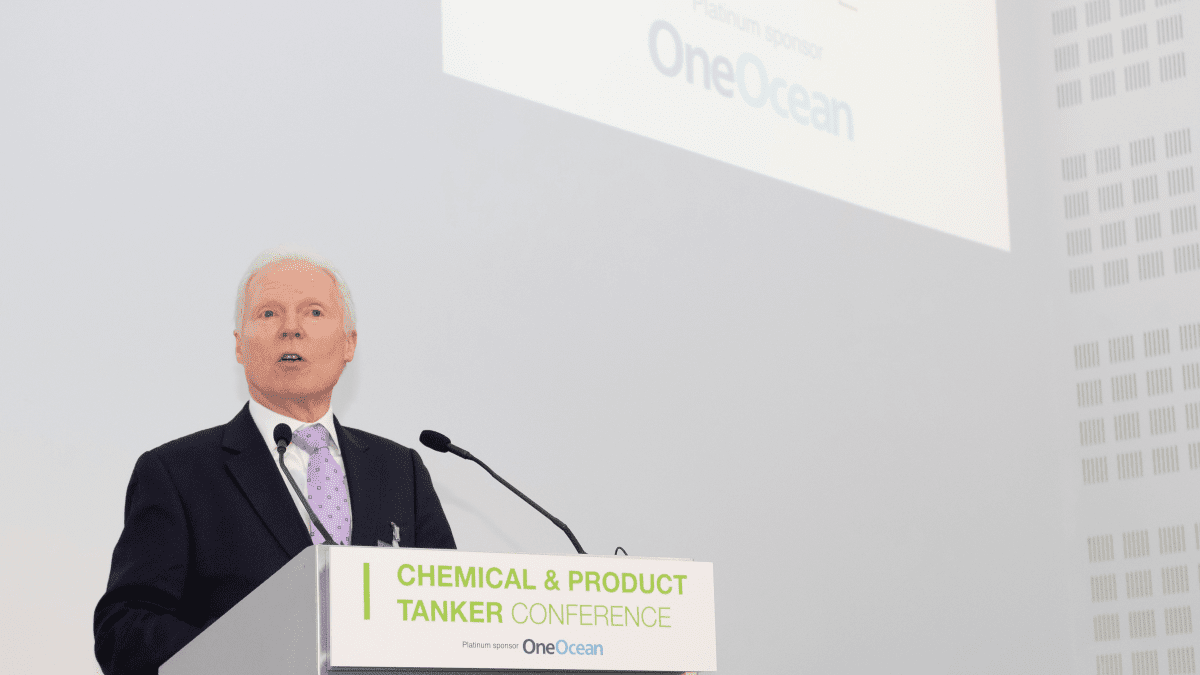 Charles Lawrie (RLA): “China’s increasing chemicals production capacity will impact imports” (source: RMM)
Charles Lawrie (RLA): “China’s increasing chemicals production capacity will impact imports” (source: RMM)
Growth in chemical carrier demand is being taxed by new macro-economic stresses and increasing Chinese domestic production
Speaking at the inaugural Tanker Shipping & Trade Chemical & Product Tanker Conference in London in April 2022, RLA’s CEO Charles Lawrie cautioned that the outlook for the global economy was uncertain. “Even before Covid, even before the war in Ukraine, we were looking at the prospects of rising inflation, rising interest rates, limited resources for certain goods, and manpower in certain sectors,” he said.
He added: “Having said that, trade in chemical carriers – and I am including commodities, specialities, inorganic acids, natural products and caustic soda – does not always exactly follow GDP growth.”
One of the reasons for this disconnect is the impact of new production capacity and any subsequent change in seaborne demand. According to RLA, in 2022 there is potentially 67M tonnes of additional capacity coming onstream, with 10M tonnes commencing operations in 2022.
The key factor for the chemical carrier trades is where the exportable extra supply may come from, with the US having the potential to increase exports of methanol, ethylene glycol, and ethanol. As Mr Lawrie noted previously during the Tanker Shipping & Trade Tanker Conference, Awards and Exhibition in Athens in November 2021, the key is to “Watch China”.
“In 2022 there is potentially 67M tonnes of additional capacity coming onstream”
China is investing in new domestic chemical production: “Imports have been relatively flat and in fact, have been on the decline,” he said. “There is something like 46M tonnes of new capacity to come on stream over the next three to four years.”
Touching on the impact of the invasion of Ukraine by Russia, Mr Lawrie noted the impact on chemical trades will be relatively small, although the loss of sunflower oil exports (around 7M tonnes) has resulted in rationing of the product in UK supermarkets.
He noted that global deep sea chemical carrier trade in 2019 was 133M tonnes, which fell to 126M tonnes in 2020, but recovered to 131M tonnes in 2021.
On the demand side, he said: “Looking at chemical carrier demand, over the period from 2019 to 2021, demand increased from about 18.5M dwt and last year approached about 20M dwt.”
Looking at the dedicated chemical carrier fleet supply, he said supply is around 26.1M dwt. He noted that this fleet is ageing; around 9% of the fleet was built before 2000 and 21% of the fleet built before 2005. Hence, there is some capacity for scrapping among the older section of the fleet.
Looking ahead, there is a substantial level of deliveries scheduled – around 1.6M dwt in the RLA base-case scenario. How will this impact the /demand balance? “In terms of the fundamentals of the chemical carrier market, the surplus remains about 20%,” said Mr Lawrie.





